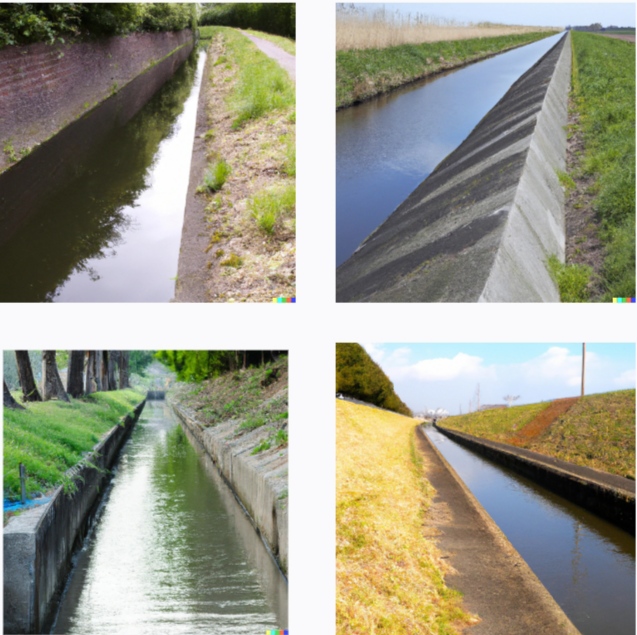Table of Contents
Canal Lining Definition
Canal lining is the process in which edges of canal are protected by waterproof layer to reduce seepage loss.
Description Of Canal Lining
When water flow in the canal, there are some loses occur due to seepage. Canal lining is used to prevent seepage loss. Canal lining prevents plants to grow. Plants reduce the speed of water. Plants also causes water logging in the canal.

Various materials such as concrete, plastic and asphalt are used to construct canal lining. Canal lining can be used to repair existing canals or to construct new ones, and is often used to improve the efficiency and reliability of water delivery systems.
Types Of Canal Lining
There are several types of canal lining that can be used to improve the efficiency, safety, and durability of a canal system. Some of the most common types of canal lining are discussed.
Concrete Lining:
Concrete is a durable and long-lasting material that can be used to line canals. It is often used in conjunction with a waterproof membrane to prevent seepage.
Asphalt lining:
Asphalt is a flexible and durable material that can be used to line canals. It is often used in areas with high levels of traffic or where the canal is exposed to harsh weather conditions.
Clay Lining:
Clay is a natural material that is often used to line canals. It is inexpensive and provides good watertightness, but it is prone to cracking and requires regular maintenance.
Geomembrane Lining:
Geomembranes are flexible, waterproof sheets that are used to line canals. They are made of synthetic materials such as polyethylene or PVC and are often used in conjunction with other materials to provide a durable and watertight lining.
Plastic Lining:
Plastic is a lightweight and inexpensive material that can be used to line canals. It is flexible and resistant to UV radiation, but it may not be as durable as other materials and may require regular maintenance.
Advantages Of Canal Lining
- Increased Efficiency: Lining a canal can help reduce water losses due to seepage and evaporation, improving the efficiency of the irrigation system.
- Reduced Maintenance: A lined canal requires less maintenance compared to an unlined canal, as it is less prone to erosion and other damage.
- Improved Water Quality: A lined canal can help improve the quality of the water being carried, as it reduces the risk of contamination from the surrounding soil.
- Increased Capacity: Lining a canal can increase its capacity, allowing it to carry more water and thus providing greater irrigation coverage.
- Increased Durability: A lined canal is more durable and has a longer lifespan compared to an unlined canal, as it is less prone to damage from erosion and other factors.
- Improved Safety: A lined canal is safer for people and animals compared to an unlined canal, as it is less prone to collapse or other hazards.
FAQ
What Is The Main Purpose Of Canal Lining?
The main purpose of canal lining is to reduce the seepage loss and increase the water efficiency.
